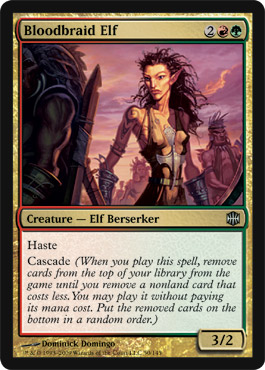
1+1=3, now that’s what I call magic
Richard Garfield is a clever man. He earned a Ph.D. in combinatorial mathematics from Penn State University with his thesis “The distribution of the binomial coefficients modulo”. He became a professor of mathematics at Whitman College in Walla Walla, Washington.
His real claim to fame however lies in the world of gaming where, with a nod towards mathematics, he managed to make 1+1=3 and earn millions of dollars for himself and his games publisher, Wizards of the Coast.
Richard Garfield is the man who created Magic: The Gathering.
Garfield always had an interest in puzzles, but this transformed into a passion for games when he was introduced to Dungeons & Dragons. He was soon inventing his own games. (Invention runs in the family, his great-uncle invented the paper clip!).
One of Garfield’s early ideas was a Cosmic Encounter-inspired card game which was known as Alpha.
Looking back, Garfield knew it had potential; “The first Magic release was affectionately named Alpha. It consisted of 120 cards split randomly between two players. The two players would ante a card, fight a duel over the ante, and repeat until they got bored. They often took a long time to get bored; even then, Magic was a surprisingly addictive game. About ten o’clock one evening, Barry “Bit” Reich and I started a game in the University of Pennsylvania Astronomy lounge, a windowless air-conditioned room. We played continuously until about 3:00am—at least that’s what we thought, until we left the building and found that the sun had risen.”
He continued to develop and adapt Magic while at the same time developing other games.
One of his favourites was RoboRally and it was while searching for a publisher for it, that Garfield met Mike Davis of what was then the recently formed and still small Wizards of the Coast.
Though liking the game, Davis felt RoboRally would be too expensive for a new company like Wizards to produce. However, one of Davis’ colleagues, Peter Adkison, asked Garfield if he would be interested in developing a fast-playing game which would need only minimal equipment and would be popular at game conventions. It would need to be cheaper to produce and easily portable to carry around to conventions.
Thinking about this challenge Garfield had an idea; what would happen if he combined two existing concepts, would he be able to create something completely new? Inspiration came from baseball cards; packets of cards which people bought and traded to create their own collections.
What this would mean for Magic was that, instead of randomly splitting a consistent deck of 120 cards, each player would have to buy and build their own unique collection of cards and before each game they would choose which 60 cards they wanted to play.
 Garfield envisaged a future where there would be thousands of different cards in circulation with the best, most powerful, cards being extremely rare. Players would have to buy lots of decks in search of these “rare gems” and a secondary trading market could emerge where cards could be swapped or bought and sold.
Garfield envisaged a future where there would be thousands of different cards in circulation with the best, most powerful, cards being extremely rare. Players would have to buy lots of decks in search of these “rare gems” and a secondary trading market could emerge where cards could be swapped or bought and sold.
Magic cards wouldn’t just be playing cards, they would be collectables too. Garfield had invented the first trading card game
Garfield returned and presented his concept of a trading card game to Adkison who immediately saw the potential and agreed to produce it.
While the game was simply called Magic through most of playtesting, when the game came to be officially named a lawyer informed them that “Magic” was too generic a name to be trademarked. Mana Clash was chosen to be the alternative but everybody involved continued to refer to it as Magic. Garfield and Adkison went back to the lawyer and, after further consultation, it was decided to rename it; Magic: The Gathering, thus enabling the name to be trademarked.
 Magic: The Gathering went on general release on August 5, 1993.
Magic: The Gathering went on general release on August 5, 1993.
In the second half of 1993, Wizards of the Coast made about $200,000. The next year, it made $40 million. By 2003 there were more than six million Magic players in more than fifty countries and over 100,000 professionally-sanctioned tournaments around the world. In 2011 it was estimated that there were approximately twelve million players.
In 1999 Magic: The Gathering was acquired by Hasbro and, in January 2014, they announced a franchise film deal with 20th Century Fox, saying that they wanted “to launch a massive franchise on the scale of Harry Potter and The Lord of the Rings.”